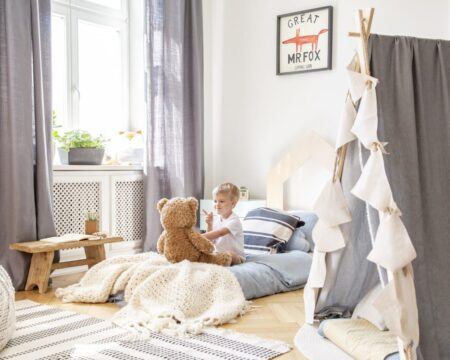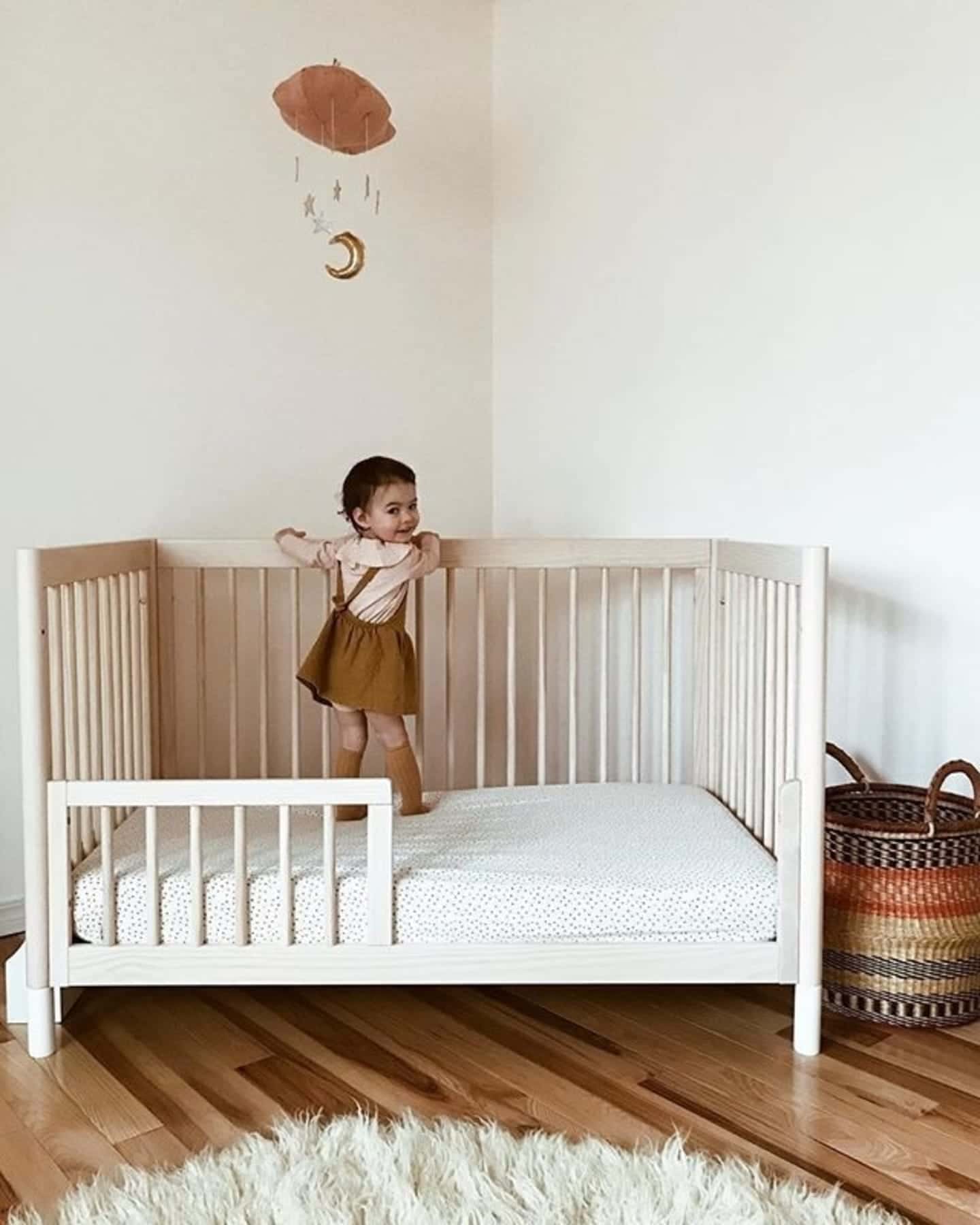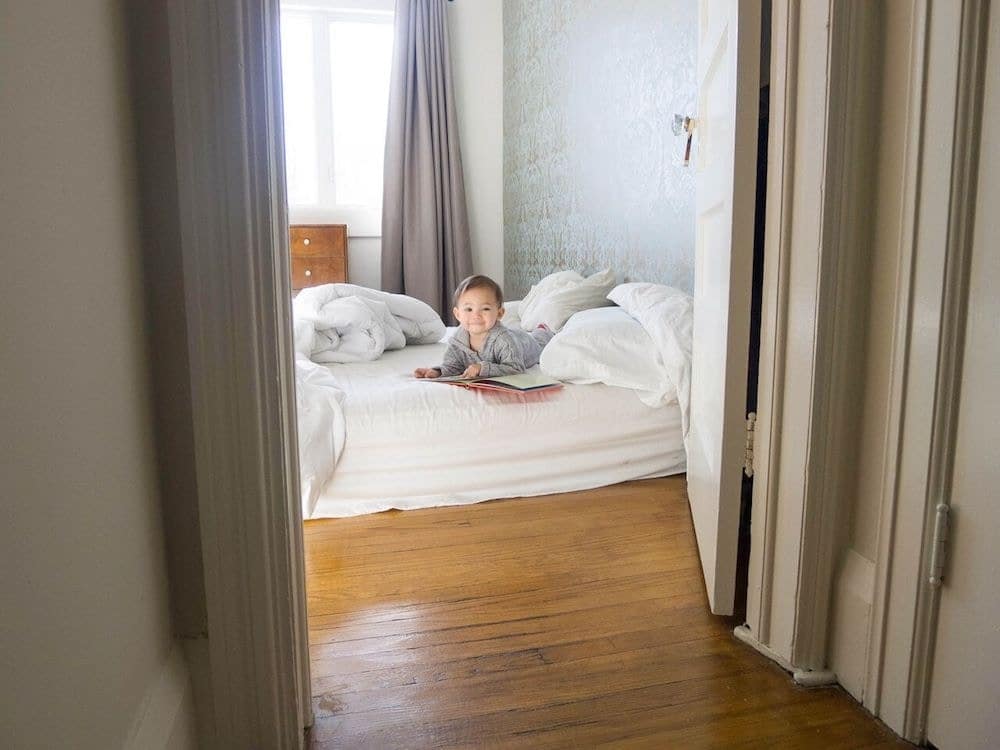8 expert tips for managing the toddler sleep regression
So your previously perfect sleeper has just turned 18 months and is suddenly battling bedtime. Or, your already-challenging night-waker is now 2 years old and naps are newly non-existent while nights are an even bigger struggle. Brace yourself, mama: Your little one has likely just hit the “18-month sleep regression.”
Why the quotation marks? Because, much like other sleep regressions, this one doesn’t necessary happen in the precise months the books told you it would. Instead, sleep regression is likely to rear its head whenever your little one is going through her first and biggest phase of learning control and independence.
While other sleep regressions, like the one that often occurs between 8-10 months, were often about physical development (crawling, pulling to stand, cruising), the toddler sleep regression is about your child learning and exerting control and independence, and testing boundaries to determine how the world really works.
Not to worry, tired families—this, too, can be managed. It will take some time, it will take consistency, and—like everything else with toddlers—it will inevitably take loads of patience.
Here are my top tips for managing the toddler sleep regression:
1. Bedtime timing is key
Many parents will assume that because their child is now a bit older, bedtime should be later. This is not necessarily the case so the first place to look when trying to solve those bedtime struggles is the timing of when your child goes to bed to ensure they are not overtired. Most toddlers who wake for the day around 6 or 7 am and nap for a couple of hours at noon each day should be in bed for the night at 7 pm to avoid over-tiredness.
In some (more rare) instances, toddlers aren’t having quite enough awake time before bed and it could be that they are not quite ready for sleep when mom or dad is tucking them in for the night. If your toddler is having a later nap of, for example, 1 pm to 3 pm each day, it’s likely that they can handle a bedtime of 7:30 pm. This will help them to be more ready for rest when they hit the hay.
2. Consider your toddler’s room environment
Distractions in your child’s room environment can play a key role in toddler bedtime struggles. Avoid loads of toys piling up in your child’s room to keep distractions and early morning Lego parties at bay.
Ensure the room is very dark, to avoid street lights causing bedtime challenges, or sunlight causing napping struggles.
If your toddler has expressed a fear of the dark (this is a learned thing, so some toddlers express this fear while others do not) then you could consider a small night-light to calm their worries, but ensure it is quite dim so as not to be distracting (and I recommend an LED option so it does not get too hot and become a safety issue).
3. Your 18-month old should be in a crib
I suggest that children sleep in a crib until at least the age of 3 and do not transition to a toddler bed or bigger bed before that time. The reason for this is related to your child’s level of comprehension at this age. While it’s certainly not always a breeze to “reason” and “negotiate” with a 3 year-old who is constantly getting out of bed, it can be a piece of cake compared to attempting to rationalize with a 2-year-old who does not have the same comprehension level and reasoning skills as an older child.
4. Kick the bedtime screen time
blogherads.adq.push(function(){
blogherads.defineSlot(‘flexrec’, ‘ad_div_in_body_2’).setTargeting(‘targetingKey’,
‘targetingValue’).display();
});
Your toddler’s amazing little mind is already running at about 100 miles per minute, so no need to add to this in the minutes leading up to Snoozeville! Avoid any screen time at all at least 1.5 hours before bedtime. On top of the colors, the cartoon characters, and everything else on the screen that stimulates your little one’s brain, the bright light emitted from screens inhibits the production of melatonin, which is the naturally occurring hormone that helps our bodies fall asleep at our proper, age-appropriate bedtime.
5. Strengthen your nightly routine
If you already have a bedtime routine in place, that’s great! But even the best bedtime routine may need some tweaking in the toddler phase.
Toddlers thrive in situations where they know what is coming up next, so consider creating a bedtime chart to help your child visualize and prepare for each step of their routine. Find fun images of each element of the routine—bath, PJs, story time and in to bed—and put them on a chart, and then check them off with your little one as you complete them. Or consider taking pictures of your child doing each element of the routine and putting stickers on the chart as they complete each item each night.
Let your toddler have some decision-making power, as this is generally what’s at the root of the bedtime struggles. Let them choose from a few options of pajamas. Let them pick the books, but ensure you limit it to two books, and only two books, every night. If your toddler knows what to expect and you never deviate from this, it will reduce the protesting for “One more book! Pleeeeeaaasee, just one more book!”
6. Consider a comfort object
Children at this age often experience a new level of separation anxiety, so in addition to ensuring you fill up your little one’s love bucket during the day, and spend ample time on cuddles, talking and bonding during the bedtime routine, you may wish to consider giving your child a comfort object for sleep. Most recommendations suggest nothing of this nature in the crib earlier than the age of one, but as a toddler it may be helpful to allow your child something small and soft and safe to provide extra comfort for sleep. Though I do suggest only one sleep object, to reduce stall tactics (“Froggy tonight! No, Bunny tonight! No! Duckie tonight!”) after the lights are out.
7. Keep it simple
Toddlers are growing and changing rapidly. By 18 months, they learn one new word every two waking hours; however, just because they understand the words doesn’t mean they speak them or that you can reason with them—that comes closer to the age of 3 (another good reason to keep the crib until at least that age). Any attention is good attention to a toddler. Your little one will need boundaries, but expectations will need to be reasonable and the language you use to communicate those expectations needs to be very simple using few, calm, even-toned words.
8. Don’t stray from usual sleep habits
If you do not allow your child to sleep in your bed, if your family’s sleep habits don’t include lying with your little one while he dozes off at night, or if your sleep practices involve waiting five minutes before responding to your child’s midnight tantrums, I don’t recommend changing these habits to try to get through this regression. Instead of helping you cope, they are likely to lead to much longer-term sleep challenges even once this “phase” has passed.
With this being said, of course you will need to respond to your little one during night wakes or manage those bedtime battles in a way that he feels supported and loved. Perhaps this looks like holding your child during a night wake, but not holding them all the way to sleep; or lying with your child at bedtime, but leaving the room while they are still awake so they can drift off independently. This is much more likely to get you through this regression and out the other side with good sleep habits in tact than throwing your old practices out the window!
Build a better bedtime for your toddler with these sleep helpers.
The perfect pajamas

Cozy, cuddly and practically indestructible, these pajamas are designed to be passed down from sibling to sibling.
Plush lamb

Oh, hi new best friend. Science shows your toddler’s favorite lovey actually helps develop their independence , so curl up and snuggle away.
Bedtime bath milk

Moisturizing, all-natural bath milk makes bath time a soothing, calming pre-bedtime ritual for your toddler
This post was originally published on The Happy Sleep Company blog.
blogherads.adq.push(function(){
blogherads.defineSlot(‘flexrec’, ‘ad_div_in_body_1’).setTargeting(‘targetingKey’,
‘targetingValue’).display();
});






















